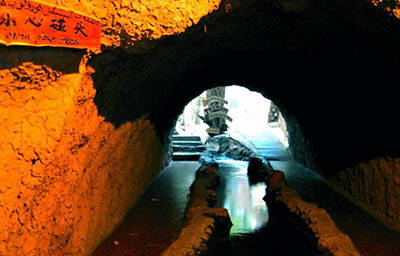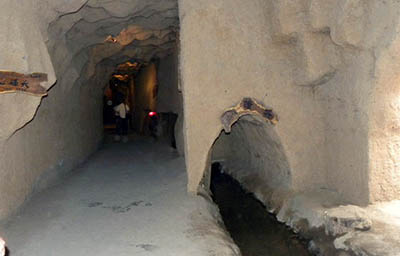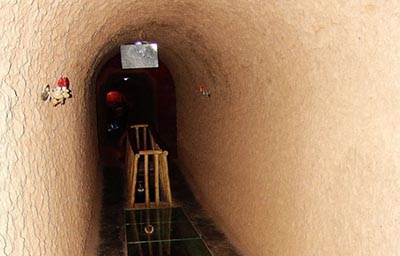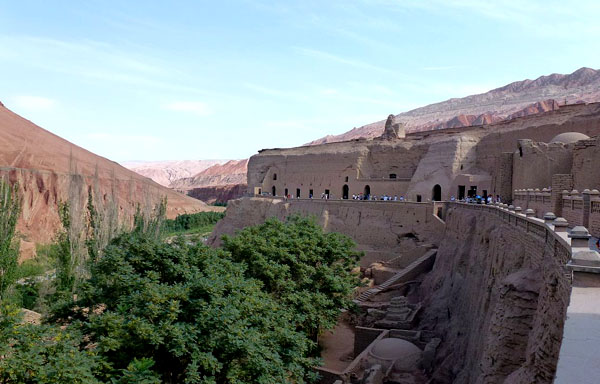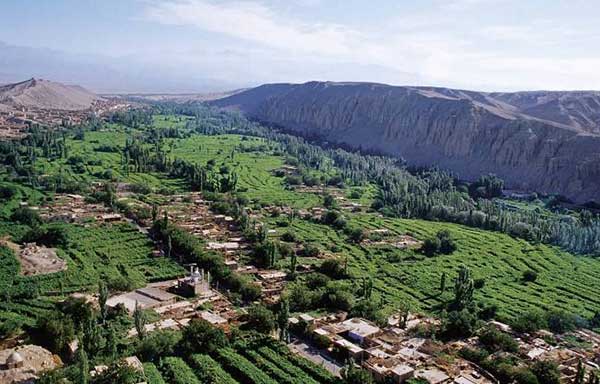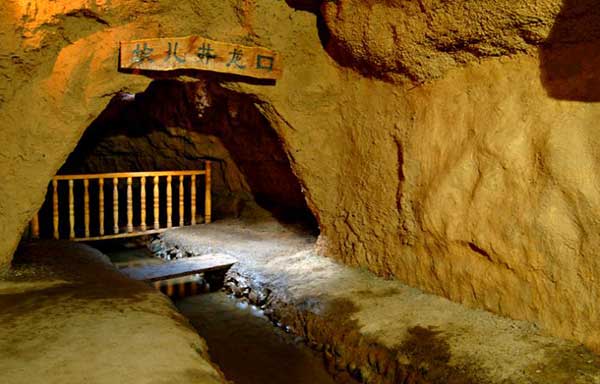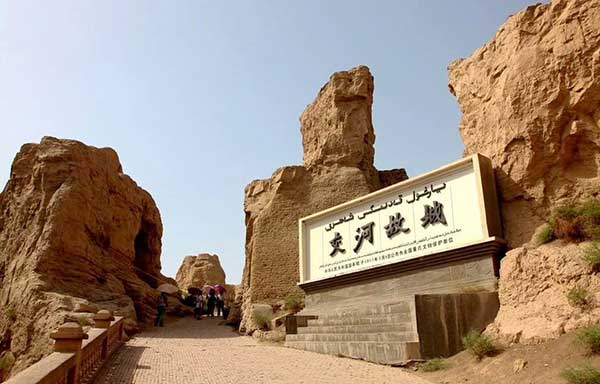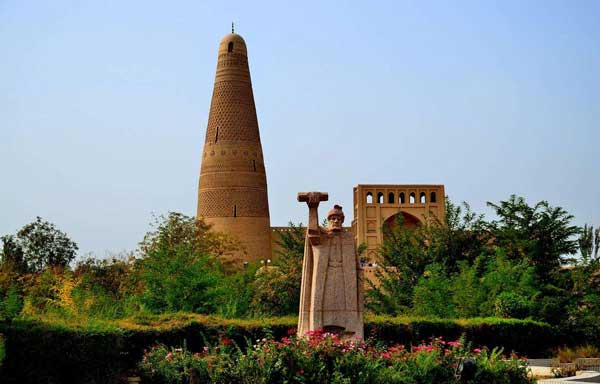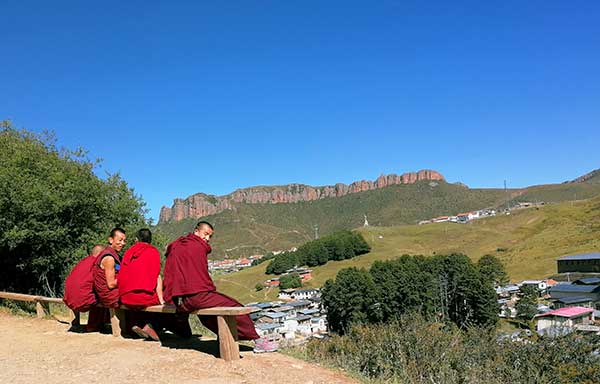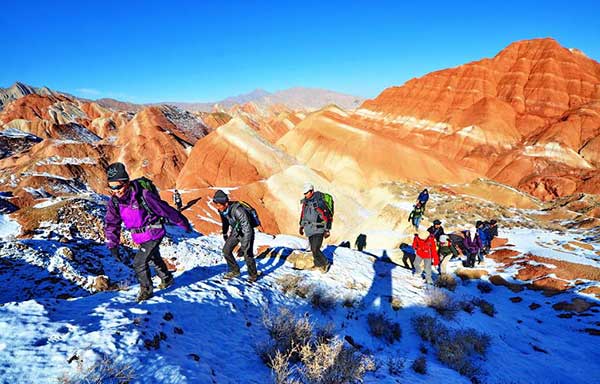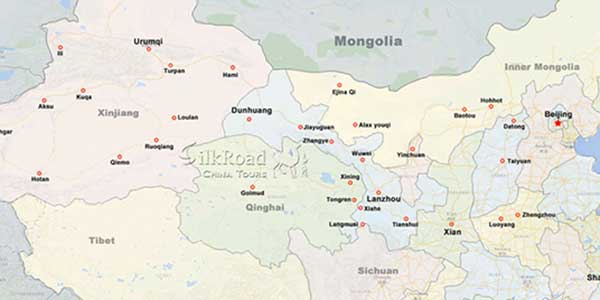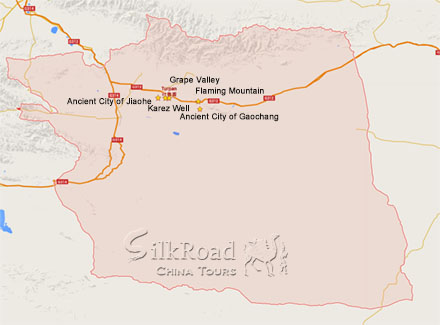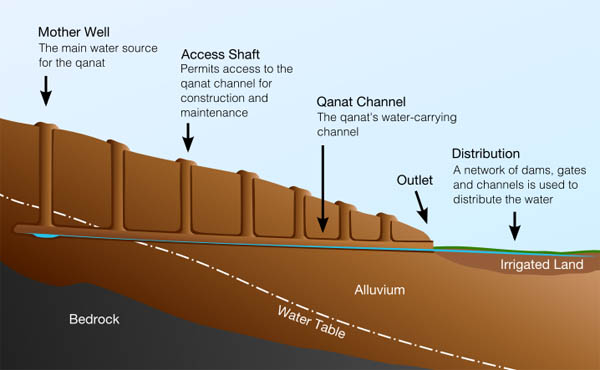 Karez systems are the crystallization of ancient people's diligence and intelligence. At its peak, this irrigation system exceeded 5,000 km (3,106 miles) and was also referred to as 'the underground Great Wall'. It is among the three ancient major irrigation projects with the other two being Ling Canal and Dujiangyan Irrigation Project.
Karez systems are the crystallization of ancient people's diligence and intelligence. At its peak, this irrigation system exceeded 5,000 km (3,106 miles) and was also referred to as 'the underground Great Wall'. It is among the three ancient major irrigation projects with the other two being Ling Canal and Dujiangyan Irrigation Project.
Karez systems are the life source of Turpan. In a sense, without them, there would be no Turpan culture. According to records, the history of the karez in Xinjiang dates back to 103B.C. Karezes have been found in Iran, the Sahara, etc., but the ones in Turpan are the most complete. Currently there are still over 400 systems.
Karez are very delicate irrigation systems made up of vertical wells, underground canals, above-ground canals and small reservoirs. Generally, a karez is 3 km (1.9 miles) with the longest being 20 to 30 km (12-19 miles) with several dozen vertical wells. Sometimes the number of vertical wells exceeds 300. Until today, the shortest karez found is only 30 meters (98 feet) long. The vertical wells are for ventilation, digging and maintenance of the karez. The bottoms of all the vertical wells are connected so that water can pass through. The underground canal is about 2 meters (6.5 feet) high and covered with earth to resist the heat. The surface canals, connected to the underground ones, are not more than 1 meter (3.2 feet) wide with trees planted on both sides to prevent evaporation.
Melting snow from the Tianshan Mountain is the water source of the karez. Water is collected by vertical wells and conducted by the underground canals to the oasis, where the water is held in the ground canals for irrigation. The vertical wells near the water source may be 100 meters (328 feet) deep while further downstream they are less than 10 meters (32.8 feet) deep.
A karez reduces evaporation, avoids getting polluted and needs no other power equipment; it runs from high to low ground owing to gravity alone. Turban is the hottest place in China and the arid climate makes water all the more precious. A karez system helps to ideally solve this problem.
Karez also functions as the natural air conditioner for the locals because they can sit in one while chatting or doing some chores. When exhausted during the scorching weather, sit in a karez, pick some grapes as they hang over the vertical wells and savour their taste, you will be thoroughly refreshed!
Gallery
Attractions in the area
Related Tours
General Information
Alias: No
Loc: 3 km from Turpan
Entrance: 40 RMB
Open Time: 08:00~17:00
Relevant blogs
-
How did the name of Tianshui in Gansu come about?
The name Tianshui is very pleasant to the ear, and it reminds one of that exquisitely beautiful verse, "After getting drunk, one doesn't know if the sky is in
-
The 8th Silk Road Hotel Festival was successfully held i
On December 27th, the "8th Silk Road Hotel Festival" grandly opened at the Yujing International Hotel in Zhangye. This hotel festival gathered industry experts,
-
The Karez Irrigation System in Turpan has been selected
On September 3rd, at the 75th Executive Council Meeting of the International Commission on Irrigation and Drainage held in Sydney, Australia, the 2024 (11th bat
-
What is the connection between "dragons" and "snakes
In traditional Chinese culture, the snake has a dual identity of auspiciousness and danger. Ancient people believed that the snake not only possesses divine cha
-
Endangered Przewalski's Horses Spotted at Dunhuang Yume
<p>In early February, a group of special "visitors"—the Przewalski's horses—appeared at the Dunhuang Yumen Pass scenic area in Gansu Province, a U
-
The Fourth Dunhuang Cultural Tourism Supplier Conference
On the morning of February 18th, the Fourth Dunhuang Cultural Tourism Supplier Conference in Northwest China commenced at the Dunhuang International Convention

